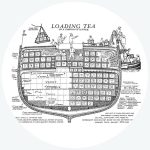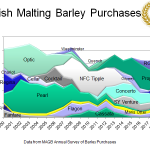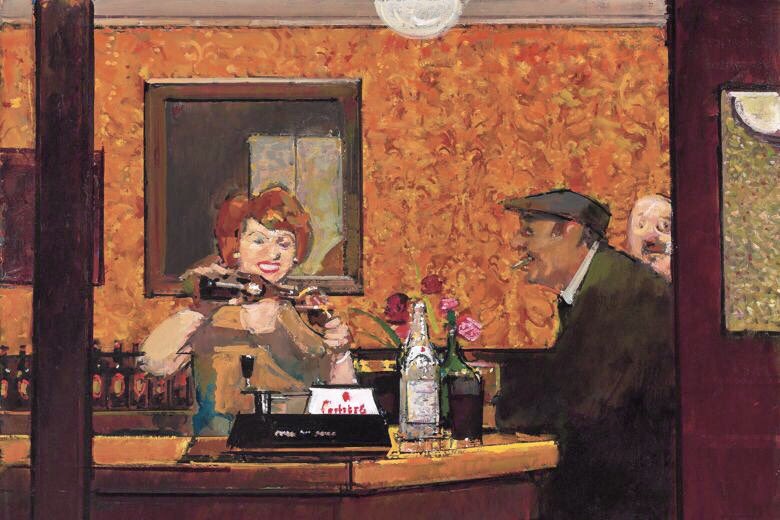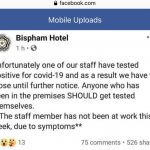Here we are. The end of March and the beginning of spring. Baseball is on the TV. Shorts and sweater weather. Excellent. I even planted lettuce seed and radish seed last weekend under row cover. Just a bit. I’m no idiot. Well, not that sort of idiot. Like many this year, it’s been a quiet week for good beer writing. Hopefully everyone else has been planting their first radishes, too. It’s also the end and beginning of the year of the plague and the second… year of the plague. Things are weird. Free beer for the vaccinated? Jab-based pub passports… why not? Me, I’m not doing too much soul searching or looking back but this by Martin serves as a milestone of sorts:
A year ago I walked into tourist Cambridge on the hottest day of the year so far. The tourists (typically two-thirds Japanese and Chinese) were completely absent. The Universities looked forlorn. Pubs were advertising their loo rolls, and the staff at Fopp treated me like their first visitor of the week. Perhaps I was.
Enough of that. In good news of 2021, The Guardian reported on an outcome which gives joy to any staff lawyer working for a municipality:
…after a dogged six-year campaign by locals, the Carlton Tavern will reopen next month – lockdown permitting – after the developers were ordered to rebuild the pub “brick by brick”, a ruling that pub campaigners say has set an extraordinary precedent. “People said it was impossible,” said Polly Robertson, a leading member of the Rebuild the Carlton Tavern campaign… “I just thought, no – I’m not going to let it lie.”
Speaking of the pubs of England, Mudgy wrote about Cask v. Covid and picks a winner:
Nowadays, the pubs that don’t offer cask tend to fall into the categories of places that are effectively restaurants, down-at-heel boozers that only appeal to a local clientele, high-end trendy bars and some beer-focused places that think not selling cask puts across a modern image. Any pub seeking a wide appeal rather than just a captive market of locals will offer cask in some form. There is a huge amount of loyalty to the category that isn’t going to disappear any day soon. The day Wetherspoon’s start dropping cask from some of their pubs in England and Wales is the day you really need to start worrying about its future. It’s not just changing a brand on the bar, it’s making a statement about what kind of pub you aim to be.
To the northwest, a tale of high tech beer packaging tech in Iceland:
The equipment in the line comes from numerous parts of the world, including the U.S.-made end-of-line Econocorp E-2000 cartoning machine. “We were led to Econocorp during conversations we had with other machine suppliers who are familiar with the kind of machinery that’s suitable for craft brewers,” says Ólafsson. “It’s just the right size machine for our production, and it’s very simple in design and, subsequently, in operation.”*
Me? I love everything from Econocorp. Elsewhere, Stan was good enough to send out his Hop Queries newsletter on Wednesday. Topics this month include “Up the downstream,” “Query of the month,” “UK hop exchange,” “Look & listen,” “At the Hop,” and “Hop profile: Nelson Sauvin” which confirm that, yes, this is a newsletter and, yes, even Stan can’t resist the hop pun. It’s also edition 4.11 which tells me he’s throwing a fifth anniversary party for the next one! I won’t spoil the Danny and the Juniors reference but Stan does provide this:
In a Wall Street Journal review of “The Food Explorer: The True Adventures of the Globe-Trotting Botanist Who Transformed What America Eats” a writer gushes: “Beer lovers, too, might want to raise a mug to (David) Fairchild. A boozy night in a village inn buying rounds for Bohemian farmers resulted in Fairchild procuring the finest German hops, which he smuggled out of the country, allowing American brewers to vastly improve their sour, inferior beers.” That’s simply not true. Full stop. No farmers in the United States at the beginning of the 20th century successfully managed to grow continental landrace hops, although English Fuggles did find a home in Oregon.
That is interesting. Formerly, I had a client in PEI who owned a former tavern which was formerly owned by a local brewer who, in his formative years, travelled to England and back, returning with hop rhizomes in pockets that he nurtured and kept damp that whole sailing voyage. The yard of the house was still rotten with them. Google maps shows it still there. Wonder what they are.
Jeff on government. As they saying goes, no one likes to see sausages made.
Also semi-officially,  I like the idea of this notification from a bar as referenced on Reddit and Twitter and a bunch of other places. It would be useful for future reference in discussions with one’s children. I, for example, know some one which is or could be a grandmother who was also barred for life from a certain establishment two Saturdays in a row. Having better documentation and records retention principles may have helped.
I like the idea of this notification from a bar as referenced on Reddit and Twitter and a bunch of other places. It would be useful for future reference in discussions with one’s children. I, for example, know some one which is or could be a grandmother who was also barred for life from a certain establishment two Saturdays in a row. Having better documentation and records retention principles may have helped.
Gary wrote a very interesting piece on an issue of Brewing Trade Review from 1962 including info on the iconic Toronto brewery set up by my hero E.P.Taylor in the early 1960s and still pumping out macro gak today!
The plant still exists, as Molson-Coors Beverage Co.’s main Canadian brewery. The tower-like, oblong-shape central building of dark brick with contrasting light frame atop, shown in the article, is still a leitmotif at the plant, on Carlingview Rd. in Etobicoke, Toronto, despite much expansion…
Ryuuhyou Draft. Japanese sea ice beer. Low in malt. Blue in colour. Speaking of weird Japanese beers…
“We will pitch the product as the standard beer for the new era.”
Ban-zoink! Elsewhere and much to the opposite, my personal hat supplier Katie M has written about her new business, Corto, with a deft dramatic touch:
“Did you know you can get down under the flooring?” our always-happy landlady beamed, on a final visit to sort the fire alarms. No. We did not know that. We’d agreed not to mention the storage issues for our sanity’s sake, clueless about how we were going to overcome the challenge of managing inventory in such a small space. Tom had only just stopped having nightmares about having to fill the entire ground floor with bathrooms. “The hatch is under the stairs, in the cupboard.”
DON’T GO IN THE BASEMENT!!! You’ll never believe what happens next.
By contrast, I found this portrait of startup Belgian brewers Antidoot a bit bizarre and even a bit disturbing, especially this bit:
A few months after the unpleasant Spring Release, Tom Jacobs read an article in Belgian newspaper De Standaard about a French winery in Bordeaux called Château Pétrus. Pétrus wines were highly coveted, partly for their quality (they are produced on an exceptional slope with blue clay soil) and partly for their scarcity (the vineyard covers only 11 hectares). A limited amount of Pétrus wine is released each year (the whole of Australia, for example, receives only 36 bottles). As a result, bottles of Pétrus were being purchased by speculators who resold them on the black market at huge markups, used as investments which which would grow in value with each passing year the wines aged.
 Weird. I think they invented pre-speculation. Just to be clear, Château Pétrus is one of the great wines of the world, producing vintages since the 1700s. It does not attract high prices on the secondary market. It attracts high prices on the primary market as this LCBO screen shot shows. Antidoot, on the other hand, is one startup brewery among thousands. One of the least reflective articles on a brewery I’ve ever read. The passage where the rocket scientists also invent compost is amazing. Spinal Tap meets beer. Sucker juice.
Weird. I think they invented pre-speculation. Just to be clear, Château Pétrus is one of the great wines of the world, producing vintages since the 1700s. It does not attract high prices on the secondary market. It attracts high prices on the primary market as this LCBO screen shot shows. Antidoot, on the other hand, is one startup brewery among thousands. One of the least reflective articles on a brewery I’ve ever read. The passage where the rocket scientists also invent compost is amazing. Spinal Tap meets beer. Sucker juice.
One final note: beer bottles prove that recycling is bullshit. Never knew that.
There. Spring. Hmm… why doesn’t my heart go dancing? And that waltz isn’t particularly… you know… entrancing? No desire… no ambition leads me… WTF!?! Oh yes – the second spring of a pandemic but, screw it, still spring. Get a beer, turn that soil and plant some seed! While performing your ag-art, check out the weekly updates from Boak and Bailey mostly every Saturday, plus more with the weekly Beer Ladies Podcast, at the weekly OCBG Podcast on Tuesday and sometimes on a Friday posts at The Fizz as well. There is more from the DaftAboutCraft podcast, too. And the Beervana podcast. And sign up for Katie’s weekly newsletter, The Gulp, too. Plus the venerable Full Pint podcast. And Fermentation Radio with Emma Inch. There’s the AfroBeerChick podcast as well! And also look at Brewsround and Cabin Fever. And Ben has his own podcast, Beer and Badword – when he isn’t in hiatus as at the mo, more like timeout for rudeness. And remember BeerEdge, too.
*ZZZZzzzz….





















